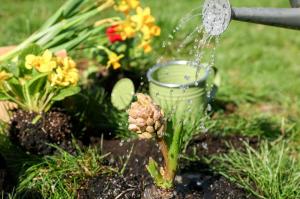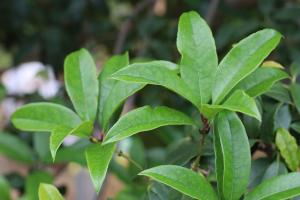How to Bring Back Your Wilted Basil Plant
Nothing is more frustrating than watching your beloved basil plant wilt away. Basil is a popular herb known for its fragrant aroma and flavorful taste. Whether you are growing it in your garden or in a pot on your windowsill, wilted basil is a common problem that many gardeners face. But don't worry, with the right care and attention, you can easily revive your wilted basil plant. Here's how:
1. Check for proper watering
The first thing you should check is if your basil plant is getting enough water. Basil needs to be watered frequently, especially during hot summer months. Check the soil moisture by sticking your finger about an inch deep into the soil. If it feels dry, your herb needs to be watered. Be careful not to overwater your basil, as this can lead to root rot. Water your basil plant until the excess water starts to come out of the drainage holes, then let the soil dry out slightly before watering again.
2. Ensure adequate sunlight
Basil requires at least six hours of direct sunlight every day to thrive. If your plant is not getting enough light, it may start to wilt. Make sure your basil is placed in a sunny location, or use grow lights if it is indoors. If outdoor conditions are too hot, provide some shade during the hottest part of the day to prevent leaf damage.
3. Prune regularly
Regularly pruning your basil plant is crucial to keep it healthy and promote new growth. When you notice your basil starting to wilt, trim off the wilted leaves and stem. This will help the plant focus on growing new, healthy leaves. Always cut above a leaf node, which is where the leaf connects to the stem. Doing so will encourage bushy growth, and more leaves will sprout from where you pruned.
4. Fertilize properly
Basil requires nutrients to grow, and proper fertilization can help keep it healthy. Use a balanced fertilizer every two to three weeks during the growing season. Be careful not to over-fertilize, however. This can lead to an excess of nitrogen, which will encourage the growth of leaves at the expense of flowers.
5. Repot if necessary
If your basil has been in the same pot for a long time, it may be root-bound. This means that the roots have grown so much that there is no room left in the pot for them to spread out. If this is the case, repot your basil into a larger container with fresh soil. This will allow the plant to get the nutrients and space it needs to grow healthy and strong.
In summary, proper watering, ensuring adequate sunlight, pruning regularly, proper fertilization, and repotting if necessary are all essential to revive your wilted basil plant. With a little patience and care, you can enjoy flavorful and healthy basil throughout the growing season.

 how many times do yo...
how many times do yo... how many planted tre...
how many planted tre... how many pine trees ...
how many pine trees ... how many pecan trees...
how many pecan trees... how many plants comp...
how many plants comp... how many plants can ...
how many plants can ... how many plants and ...
how many plants and ... how many pepper plan...
how many pepper plan...




























